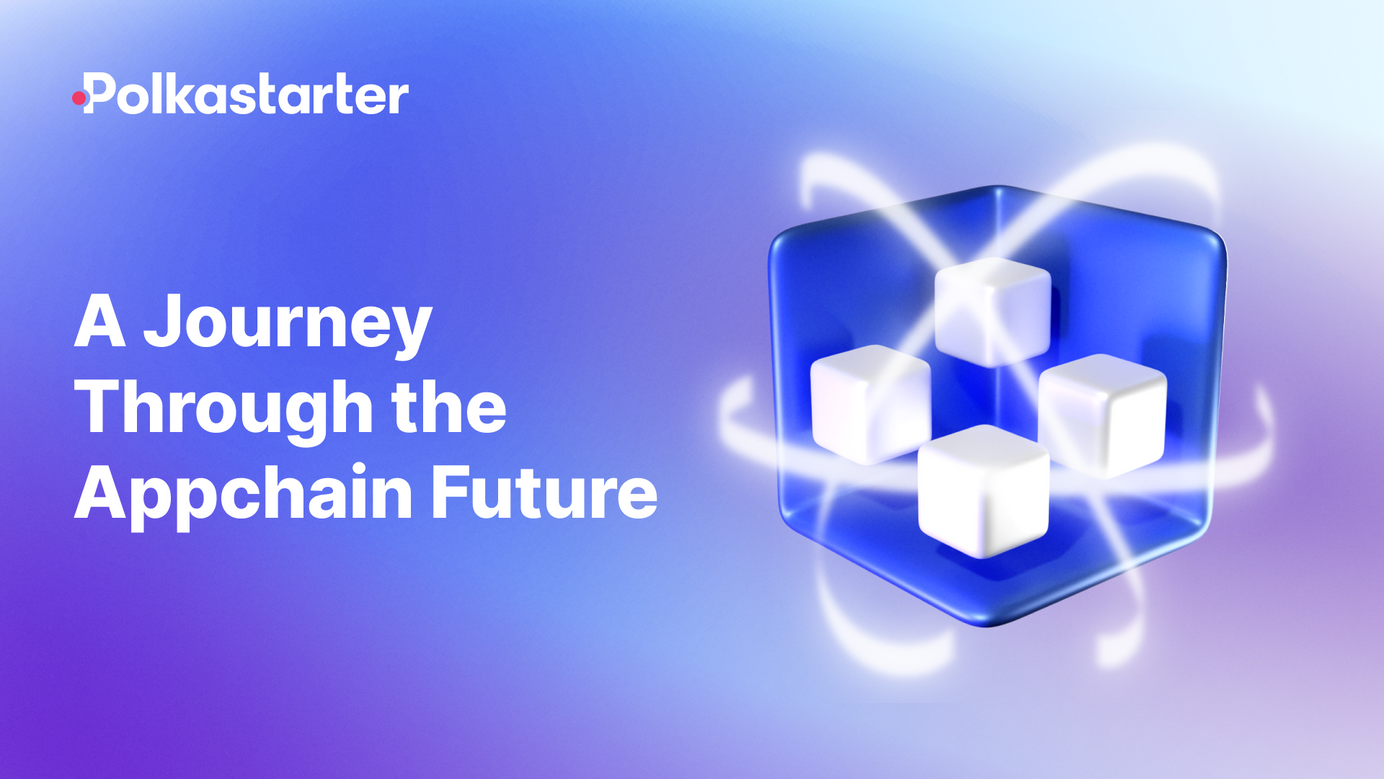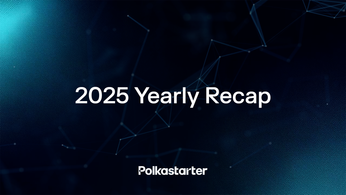
A Journey Through the Appchain Future
How Cosmos is laying the groundwork

Ethereum is considered to be an ideal solution for many builders. However, a significant issue with Ethereum and other public blockchains is the limited customizability.
It’s no secret that dApps are looking for a more customizable solution. In 2022, quite a few chose to go down the road of an Application-Specific Chain (Appchain), which is designed to support specific use cases and meet specific requirements. The leading example of this trend is dydx's move from StarkWare to their own chain.
In today’s blog, we will examine the following:
- What Appchains are
- Appchains' benefits and challenges
- Cosmos Ecosystem Overview
- How to start your Appchain journey
What is an appchain?
Appchains are defined as single-use case blockchains that dedicate their blockspace to a specific application. Applications that build Appchains can customize multiple layers of their stack, such as their security model, fee token, and write permissions, among others. A better examination of what an appchain does involves looking at the benefits.
Appchain benefits
The traditional advantages of a monolithic structure like Ethereum are shared security and composable smart contracts. These set the scene and foundation to settle transactions synchronously, creating the ideal conditions for the initial DeFi ecosystem. With that, of course, came challenges such as:
- Scaling a global computer to manage the world's finances
- Centralizing and restricting a developer’s freedom
- The capacity to generate MEV revenue
This is where appchains come in. Instead of using a smart contract set up on another chain, appchains operate their independent blockchain.
Sovereignty
Refers to the power of self-government. In a monolithic blockchain, all dApps must abide by the host blockchain's rules and code.
Adjustable Transaction Fees
Transaction fees on Ethereum are still unpredictable, making them too high for low-cost and low-volume products.
Using rollups to reduce fees is possible, but it still leads to fluctuations and instability. One might propose improving the Ethereum gas mechanism through EIP, but it is a long and challenging process; hence building an Appchain is a more efficient alternative.
On an Appchain, dApps can own and modify their code. The developers can work with validators to adjust transaction fees, providing a better user experience.
Higher Value Capture
With control over their codebase, Appchains can manage transaction ordering and selection, enabling the generation and control of MEV revenue.
For instance, the Proto-Rev module from Skip Protocol can extract arbitrage revenue for itself and its token holders, with approximately $7 million in MEV available for extraction.
By having sovereignty over an Appchain, dApp can secure the MEV for its token holders, boosting the value of the dApps’ native tokens.
Conversely, on monolithic chains, only native chain validators/miners can see the transactions, identify opportunities for MEV, and potentially exploit them.
Appchains offer several benefits over monolithic structures like Ethereum. They offer greater flexibility in architecture design, better user journeys, and the ability to tailor the blockchain to the app to adjust fees and generate and control MEV revenue, Overall, Appchains provide more control and customization for dApp developers.
Appchain challenges
Appchains, despite its advantages, currently has a drawback of not being fully decentralized.
When a team launches an Appchain, they can choose to work with a range of tens of validators, while none of the Appchains is large enough to upscale the number of validators, whereas Ethereum has approximately 500,000 validators.
Additionally, managing the infrastructure such as sequencers or validators for an AppChain is more complex than deploying a smart contract on Ethereum.
However, various Appchain solutions like Avalanche, Polkadot and others have been exploring ways to address this issue.
Cosmos ecosystem
The Cosmos network is one of the most successful appchain solutions today. Cosmos encloses all blockchains built using any version of the Cosmos software development kit (SDK):
- Tendermint Core, a pre-constructed consensus engine,
- Cosmos SDK, a software development kit, and
- IBC is a network communication protocol.
The Cosmos Stack tooling expedites development by providing an easy-to-use, composable framework. This allows developers to swiftly generate consensus and networking layers to then build their application on.
By offloading production of the lower layers, development teams can focus more on the application itself, creating a more well-rounded product. Cosmos has been a hotbed of activity in the past year, especially for Central Limit Order Books (CLOB) DEXs such as dYdX, Kujira, Sei Network, and Injective.
Just how much of a hotbed? Well, there are 54 chains in the Cosmos ecosystem — a 65% YoY increase from last year’s 32.
For more extensive reading on the Cosmos mechanics, you can refer to their whitepaper and roadmap.
How to Get Started on Cosmos
To explore “The Cosmos Thesis,” you can watch this informative video with crypto vets Sunny Aggarwal and Zaki Manian. In terms of steps, here’s what you need to do:
- Get a Keplr wallet
- Get ATOM
- Transfer to and trade on Osmosis
- Go to Stargaze to collect NFTs
For devs, visit Tools to find out what you can build.
Are appchains the future?
The concept that dApps will eventually desire their own individual chains is not a novel idea. The teams behind Cosmos, Polkadot, and Avalanche have been striving toward this envisioned future for years.
Avalanche Subnets are separate blockchains that do not benefit from the security and interoperability of other subnets. Unlike the Inter-Blockchain Communication (IBC) protocols of CosmosHub and Polkadot's XCM, there is no means of communication between Avalanche subnets. However, Avalanche has recently introduced Avalanche Warp Messaging, which enables cross-subnet communication.
Cosmos has emerged as a highly favored option for appchain solutions. The announcement by dYdX earlier this year that they would be transitioning to their own chain utilizing the Cosmos SDK, reignited interest in appchains. The Delphi Labs team also recently conducted a comprehensive analysis of the crypto and DeFi ecosystem and announced their decision to focus their efforts on the Cosmos platform.
The journey of improvement for Cosmos does not end here. The Cosmos governance recently approved a crucial proposal, calling for the contribution of new features in 2023 with a focus on enhancing safety, governance, user experience, data transparency, and more.
Nascent, a well-respected venture capital firm, has joined the growing number of individuals and organizations who believe that the future of the crypto ecosystem will involve some form of appchain-centric world. As we move towards a more compatible and composable ecosystem, it is exciting to see the potential for innovation and growth that Appchains offer.
About Polkastarter
Polkastarter is the leading decentralized fundraising platform enabling crypto’s most innovative projects to kick-start their journey and grow their communities. Polkastarter allows its users to make research-based decisions to participate in high-potential IDOs, NFT sales, and Gaming projects.
Polkastarter aims to be a multi-chain platform. Currently, users can participate in IDOs and NFT sales on Ethereum, BNB Chain, Polygon, Celo, and Avalanche, with many more to come.
Website | Twitter | Discord | Telegram | Instagram | Newsletter | YouTube | Poolside
Polkastarter Blog - Latest Polkastarter News & Updates Newsletter
Join the newsletter to receive the latest updates in your inbox.





